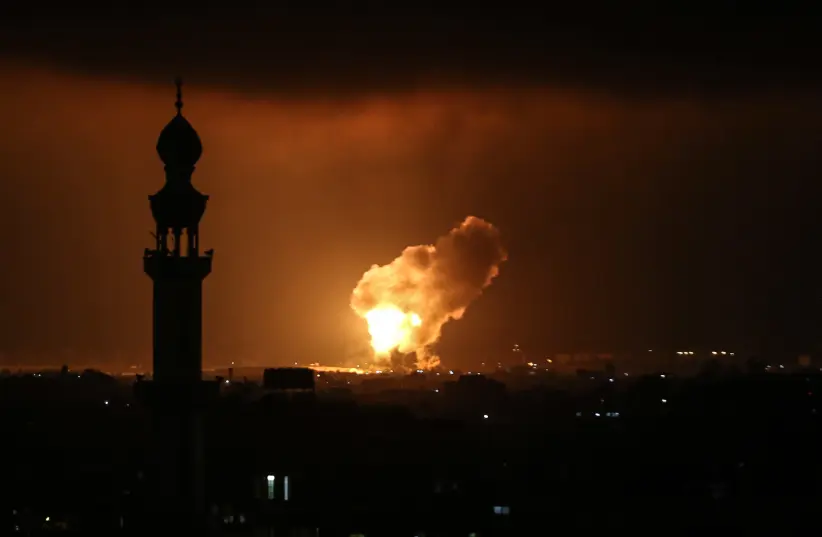Foreign
Israeli jets block Iranian plane suspected of ferrying arms to Hezbollah over Syria

Israeli warplanes intercept flight, order it to turn around; incident comes amid efforts to prevent all weapons shipments to Lebanese terror group

An Iranian flight suspected to be ferrying arms to the Hezbollah terror group in Lebanon was blocked by the Israeli Air Force over Syria overnight between Saturday and Sunday, The Times of Israel has learned.

IAF fighter jets intercepted the Iranian plane over Syria and ordered it to turn around, and it did a short while later, a defense source said.
The incident was first reported by Ynet, although the news site showed a screenshot of flight data from an unrelated Iranian Mahan Air plane that landed in Syria’s coastal city of Latakia in the afternoon hours of Saturday.
The interception of the flight came as part of Israel’s efforts to prevent Iranian weapons from reaching the Lebanese terror group, during a ceasefire between Israel and Hezbollah.
In recent months, the Israel Defense Forces has forced several Iranian flights to make U-turns over Syrian or Iraqi airspace, after they were suspected of carrying weapons to Hezbollah.
The IDF has said that, during the truce, it would continue to act to prevent all weapon deliveries to the Lebanese terror group, including by striking shipments anywhere in Lebanon or Syria.

An F-35 Adir from Squadron 140 takes part in an Israeli air force show during the graduation ceremony for soldiers who have completed the IAF Flight Course, at the Hatzerim Air Base in the Negev Desert, June 29, 2023. (Ofer Zidon/Flash90/File)
Last week, a senior military official said that the IDF would not just strike the weapon shipments, but Syrian President Bashar Assad’s regime would pay for aiding Hezbollah.
In the hours before the ceasefire early Wednesday, the IDF carried out strikes against Hezbollah’s smuggling routes.
Three border crossings between northern Lebanon and Syria, which the military said were used by Hezbollah to smuggle weapons, were destroyed. The IDF assessed that it would take time to repair the crossings, and during that time, Hezbollah would have limited routes to bring in weapons, which would be easier for Israel to monitor.
Illustrative: A picture taken from Lebanon shows Syrian officials inspecting the damage on the Syrian side of the Dabussiyeh border crossing after an Israeli airstrike on November 27, 2024. (Fathi AL-MASRI / AFP)
On Saturday, during the ceasefire, IAF fighter jets struck infrastructure in Syria near the country’s border crossings with Lebanon, which the IDF said were being “actively” used by Hezbollah to transfer weapons.
Thousands of trucks and hundreds of planes carrying missiles and other components for Hezbollah have traveled from Iran to Syria, and later to Lebanon, in recent years, according to the IDF.
Reports of Israeli strikes on Hezbollah weapons shipments began to emerge in early 2013, with Israel officially keeping mum to avoid blowback from Damascus and its allies, in light of the civil war there.
It has increasingly opened up in recent years about the sorties, which have complemented a longstanding aerial campaign aimed at keeping Iran from gaining a foothold near Syria’s border with Israel.

























